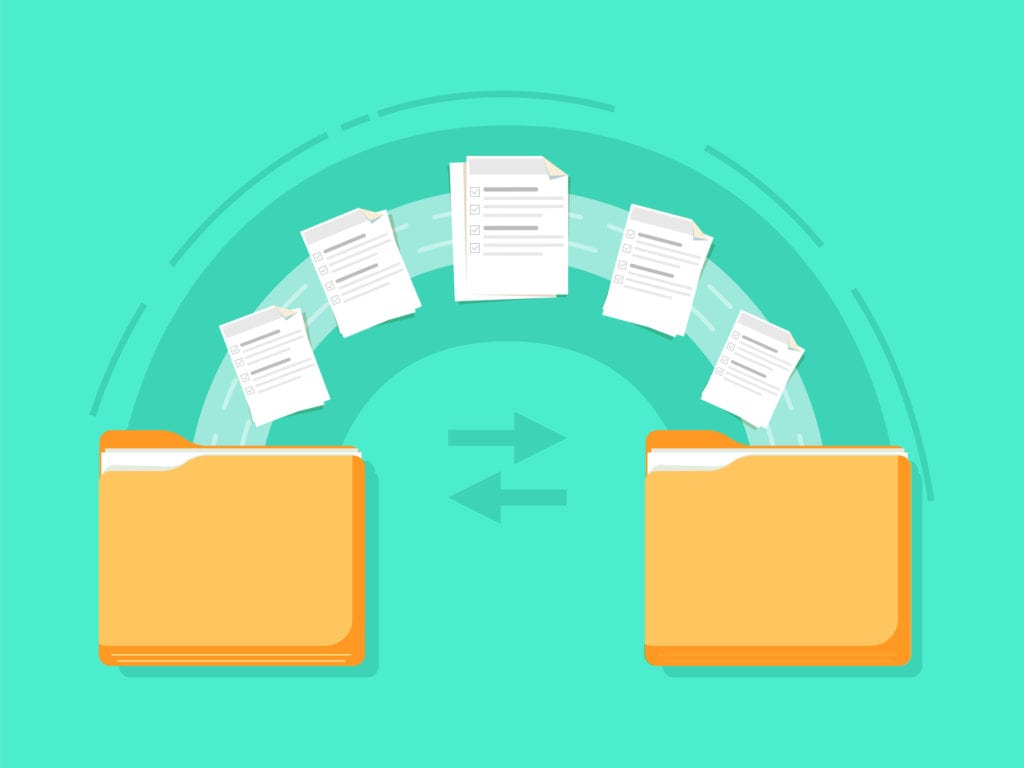
Over the last 5+ years, businesses in Nampa, ID and the rest of the country have been moving their workloads to cloud environments. The cloud offers more flexibility, better capabilities for less cost than traditional software, and is a necessity for business continuity in the face of the unknown.
But companies aren’t always happy with their cloud tools, causing them to need to migrate data from one app to another fairly regularly. Organizations churn through about 30% of their cloud apps every year.
This means data migration is a constant task, and one that can be fraught with problems if you’re not working with a Treasure Valley area IT professional that knows how to get data from Point A to Point B without mishaps.
Users often make the mistake of thinking that things “won’t be that hard” when moving data from one SaaS platform to another. There will often be DIY instructions offered on software sites, but they don’t generally clue you into all the things that can go wrong.
When cloud data migration isn’t handled properly, companies can suffer from:
- Data being lost or corrupted
- Data security risk due to protections not being carried over
- Time wasted redoing migrations more than once
- Data ending up in the wrong fields
- Time-saving automations being eliminated
Data Migrations Errors You Want to Avoid
Not Backing Up Data First
An important first step before migrating any type of data from one system to another is to back it all up first. Anything can go wrong during a migration and if you don’t have your original data to fall back on, you could end up losing years’ worth of important customer records or other company data.
The online backup process may differ according to the cloud tool you’re using. Some may allow you to export all data into various CSV files, and others may do a full account backup saved to their own server.
You want to make sure that you have a full copy of all data and settings in your account and that you own the copy (i.e., Not one that the SaaS provider controls). This will save you if there are any data loss problems during the migration.
Not Giving Enough Time for the Migration
Business owners often try to time migrations so they’re paying as little as possible. For example, they might shut off one tool during the trial period for another and only give themselves a few days to migrate everything.
This can result in problems should the migration not go smoothly or if you accidentally forget to migrate some of your data fields. For example, if you find out a month after shutting off your old service that you left behind all your comment fields for sales leads, your old data may have already been wiped from the old provider’s servers.
It’s worth it to have a month overlap with two subscriptions to ensure you have enough time to get your cloud data migrated to a new platform, and also to discover and grab any data that might have been left behind.
Not Validating the Migration Setup First
Everything should just go smoothly with an app-to-app migration, right? It looks so easy when you’re going through the FAQ page of a tool provider. But, more often than not, there are road bumps.
Fields might not map the way you expected, or you may have chosen the wrong space delineator during setup and end up with several fields merging into one in a customer record.
A critical mistake that many companies make when trying to migrate cloud data themselves is to not validate the migration setup first. So, they end up migrating thousands of records and having a major issue happen that causes a need to delete everything and start over from scratch. This is a waste of time and money.
It’s important to validate how a migration is set up first with a couple of records before migrating all your data over. This ensures that everything is confirmed to have transferred over as it should, and that no data was garbled or lost before moving all your records over.
Dumping Data Into a New App Without a Strategy
A big mistake that users will often make when migrating to a platform like Microsoft 365 is to just put everything in a main cloud storage folder, even though there are more efficient places to migrate certain data types.
Not having a data storage strategy before transitioning to a new all-in-one platform can mean that it’s harder for users to find data and you miss out on important efficiency and security features.
For example, when transitioning to Microsoft 365, a good strategy for migration is:
- Companywide files: Migrate to SharePoint Communication sites
- Department & Team files: Migrate to SharePoint Team sites & MS Teams
- Individual user files: Migrate to OneDrive
Enjoy Trouble-Free Cloud Migrations With Connect2Geek
Connect2Geek can help your Treasure Valley business with smooth and complete cloud data migrations that save you time and money.
Schedule your free consultation to learn more today! Call 208-468-4323 or reach out online.
